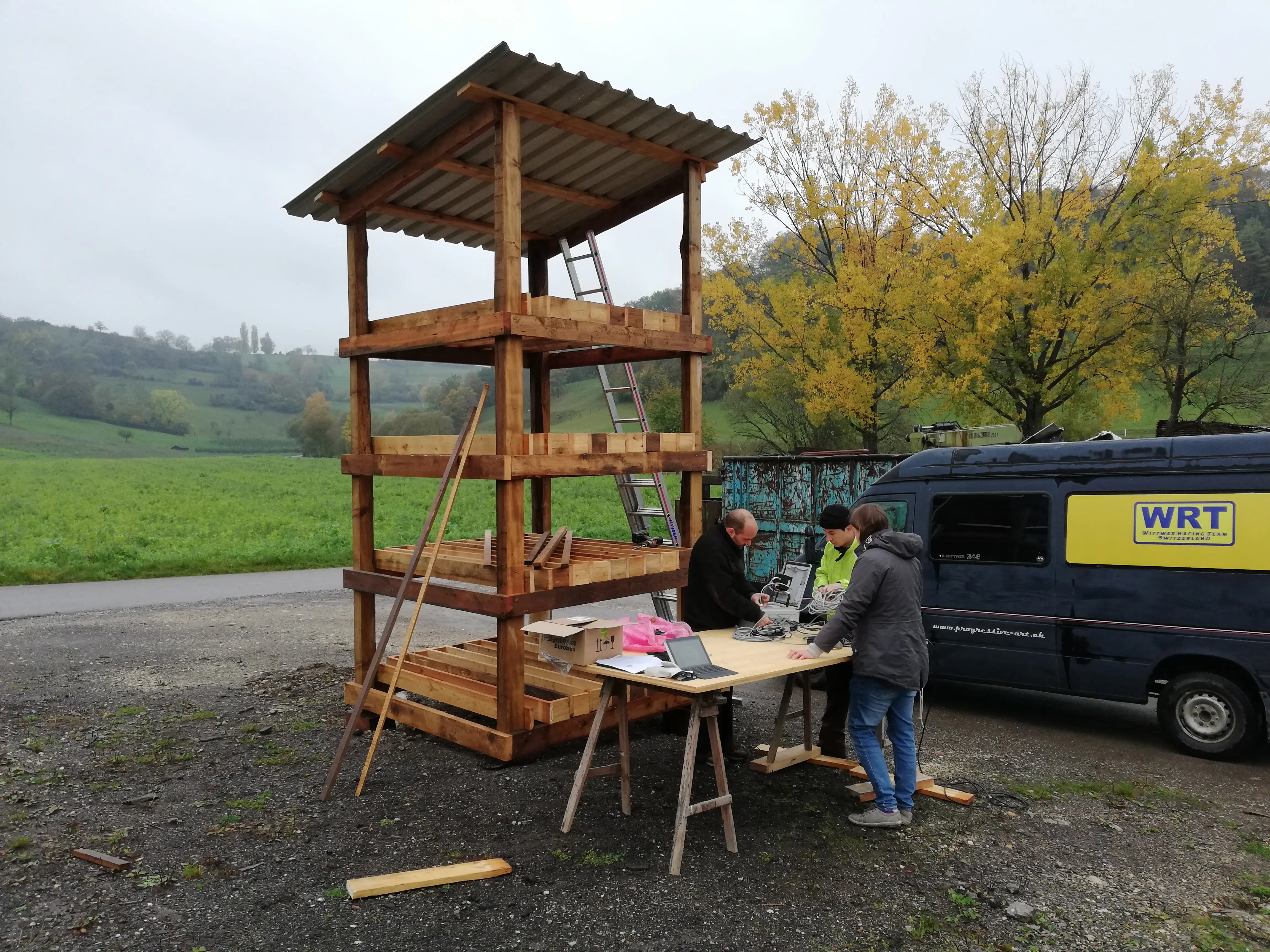A tower changes the outlook of wood drying
Beech is the most common deciduous tree in Switzerland. Its wood is primarily used as a fuel, but also has great potential in the construction sector. ZHAW researchers are working on a previously unused method of drying the wood in an environmentally friendly and rapid manner in order to use it for new applications.

Together with the wood construction company Natürlich Meister Holzart GmbH, researchers and students from the ZHAW Institute of Energy Systems and Fluid Engineering (IEFE) under the direction of Markus Weber Sutter are working on a drying tower for beech logs. This literally turns the storage and drying of wood upside down. Today, tree trunks are usually stored and dried lying down, which requires a great deal of energy. The drying tower, however, should function without any external energy input and stores the logs upright. Thomas Meister is the initiator of this project, which is financially supported by Innosuisse. He says: "With the first tests we have only shown that a beech trunk stored upright does not suffocate. Thanks to the cooperation with the IEFE, we can now improve the conditions for fast and efficient timber drying".
A little brother for research
Natürlich Meister Holzart has been using a prototype drying tower for some time now. It is approximately 16 meters high and stands on a base of 25 square meters. There is still room for improvement in this system, as IEFE researcher Anastasia Purschwitz explains: "Moisture enters the tower from below; and the airflow that is supposed to pass through the tower and dry the logs is not yet sufficient". In order to optimize the tower to these aspects, the timber construction company and the IEFE have built a four-meter high model tower which copies the original. This project, on which the two students Roger Junker and Ivo Fust worked together, is now complete. Next spring, two additional small towers are to be built as part of a follow-up project. "On these we can realize our ideas with little effort", Thomas Meister is confident.
Revealing measurements
The IEFE researchers will measure very different aspects at the three test towers. "We will determine solar radiation and wind speed in order to measure the external weather conditions", explains Anastasia Purschwitz. In addition, instruments are installed in the towers at various heights to record the flow velocity, humidity, temperature and pressure. "This enables us to identify the amount of moisture which is discharged from the logs over time," says Anastasia Purschwitz, and adds: "The aim is to find out the most efficient conditions for the drying process."
Different ideas, one goal
Anastasia Purschwitz and her colleagues have developed various approaches which will be tried out in the coming year. One of them: "We will position the towers according to the points of the compass in order to ensure that as much sunlight as possible hits their sides". Another change concerns the façade. Instead of corrugated sheet metal, it will be made of special absorber sheets on one of the test towers. Another tower will be painted black. Both measures serve to make better use of the sun's energy for drying. "Furthermore, the towers are to be optimized for better air flow, especially in the middle," explains Anastasia Purschwitz. This is to be achieved with felt mats which divert the air into the interior of the tower.
Wide range of applications
Once the beech wood has dried, it can be used in many different ways. The often criticised strength of this underestimated building material offers many advantages: With beech wood, constructions can be kept comparatively slim. Thomas Meister knows the market niches into which beech wood will one day be able to penetrate: "Its structural properties make it ideal for use in multi-storey building construction. Thus there is no need to worry about beech, which is the predominant tree species from the Black Sea to the North Sea. If it is properly stored, dried and processed, it is a real alternative in the future building construction.